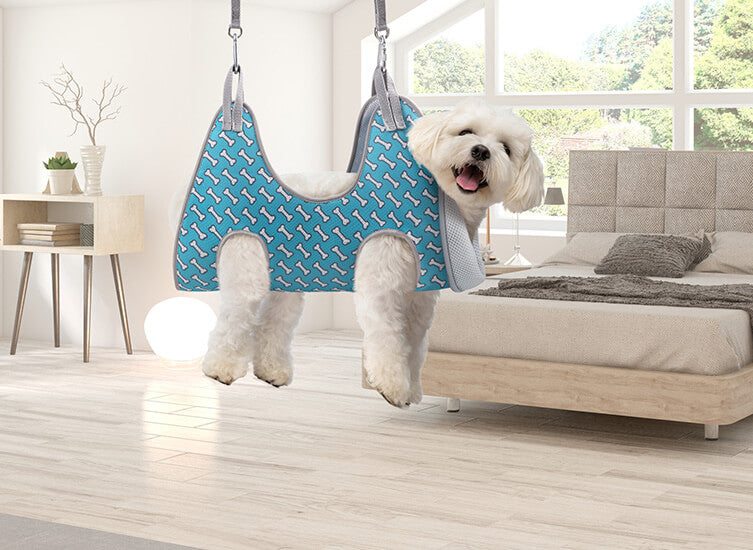Introduction
When it comes to our furry friends, we all want to ensure they have the best care possible, especially after undergoing surgery. The post-surgery period is a crucial time for dogs, as it sets the foundation for a swift and complete recovery. During this time, their bodies are healing from the inside out, necessitating a peaceful, comfortable environment and vigilant care to avoid complications.
The importance of post-surgery care for dogs cannot be overstated. Just like humans, dogs need ample rest, specific medications, and sometimes, changes to their usual routines to heal properly. This guide aims to provide dog owners with a comprehensive understanding of how to care for their pets after they've had surgery. From creating a calm recovery space to managing medications and monitoring for signs of complications, we'll cover all the essential steps to ensure your dog gets back on its four paws as quickly and safely as possible.
By following the advice and tips outlined in this guide, you can help minimize your dog's discomfort and speed up their recovery process. Remember, providing effective post-surgery care not only helps your dog heal physically but also supports their overall wellbeing during this vulnerable time.
Understanding Different Types of Dog Recovery Cones
Recovery cones, also known as Elizabethan collars (E-collars), are an essential tool for preventing dogs from licking or biting their wounds or stitches after surgery. Initially introduced in the form of a rigid, lampshade-like structure, these cones have evolved into various types to enhance comfort and compliance. The right recovery cone can significantly affect your dog's healing process, making it crucial to choose one that suits their needs and temperament.
Traditional Plastic Cones

Traditional plastic cones are the original design of the E-collar, characterized by their lampshade-like shape. Made from a lightweight but sturdy plastic, these cones are highly effective at preventing dogs from reaching their wounds. However, they can be uncomfortable for some pets, especially when eating, drinking, or sleeping. Despite this, they remain a popular choice due to their durability and affordability.
Soft Fabric Cones
Soft fabric cones offer a more comfortable alternative to the traditional plastic design. Made from flexible fabrics, these cones can be more pleasant for dogs to wear, particularly during long recovery periods. They still provide the necessary barrier to protect wounds but are less intrusive and more adaptable to your dog's daily activities. Some fabric cones are adjustable and come with removable parts for easy cleaning.
Inflatable Collars

Inflatable collars are a newer type of recovery cone that provides a more comfortable and less restrictive alternative. Shaped like a donut or a neck pillow, these collars prevent dogs from reaching their wounds while allowing them to eat, drink, and sleep more comfortably. They are particularly suited for dogs who find traditional cones distressing. However, they might not be suitable for all types of injuries, especially those located on the lower body.
Flexible and Adjustable Cones
Flexible and adjustable cones represent the latest advancement in the design of recovery cones. These cones combine the benefits of both soft and rigid materials, offering a comfortable yet effective barrier. Many of these cones feature adjustable straps or Velcro closures to ensure a snug fit, and some even have removable stays for added rigidity when needed. This versatility makes them a preferred choice for many pet owners seeking the optimal balance between comfort and protection.
How to Determine the Correct Size and Fit
Selecting the right size and fit for a recovery cone is paramount to your dog's comfort and healing. Here are steps to ensure you pick the perfect fit:
Measuring Your Dog's Neck
Use a flexible tape measure to wrap around the widest part of your dog's neck. This measurement is crucial for selecting a cone that fits comfortably without being too tight or too loose.
Selecting the Right Cone Size
Compare your dog's neck measurement to the manufacturer's sizing chart. If your dog falls between sizes, choose the larger size for comfort and adequate protection.
Ensuring Proper Length
The cone should extend beyond your dog's nose by a few inches to prevent them from reaching their wound or surgery site. A cone that is too short will not offer the necessary protection.
Introduction to the Cone
Gradually introduce the cone to your dog with patience and positive reinforcement, using treats and praise to encourage acceptance.
Comfort and Alternatives
Consider soft cones or recovery suits as more comfortable alternatives that still ensure the wound or surgery site is protected.
Material Considerations for Recovery Cones
The material of the recovery cone can significantly impact your dog's comfort and willingness to wear it. Traditional plastic cones are durable but can be uncomfortable for extended wear. Soft cones, made from flexible fabrics, offer a more comfortable and less stressful experience for your pet during their recovery period.
Selecting the Right Cone for Your Dog's Specific Needs
Choosing the right cone depends on your dog's specific needs, size, and comfort. Consult with your veterinarian to provide valuable insight into the best type of recovery wear for your dog, based on their condition and needs.
Tips for Introducing Your Dog to the Recovery Cone
Introducing your dog to the recovery cone can be challenging. Use treats for positive reinforcement and consider alternative options like soft recovery cones or recovery suits for a more comfortable experience.
Alternatives and Innovations in Dog Recovery Collars and Cones
The pet care industry has introduced various alternatives and innovations, such as the soft pet recovery collar and inflatable collars, designed to improve comfort during the post-surgery recovery process.
Conclusion
Caring for a dog after surgery is crucial for their recovery. Following veterinarian instructions, using a soft recovery cone, and providing love and care will ensure that your dog heals properly and avoids complications. With patience and diligence, your dog will soon be back to their playful and loving self.


















